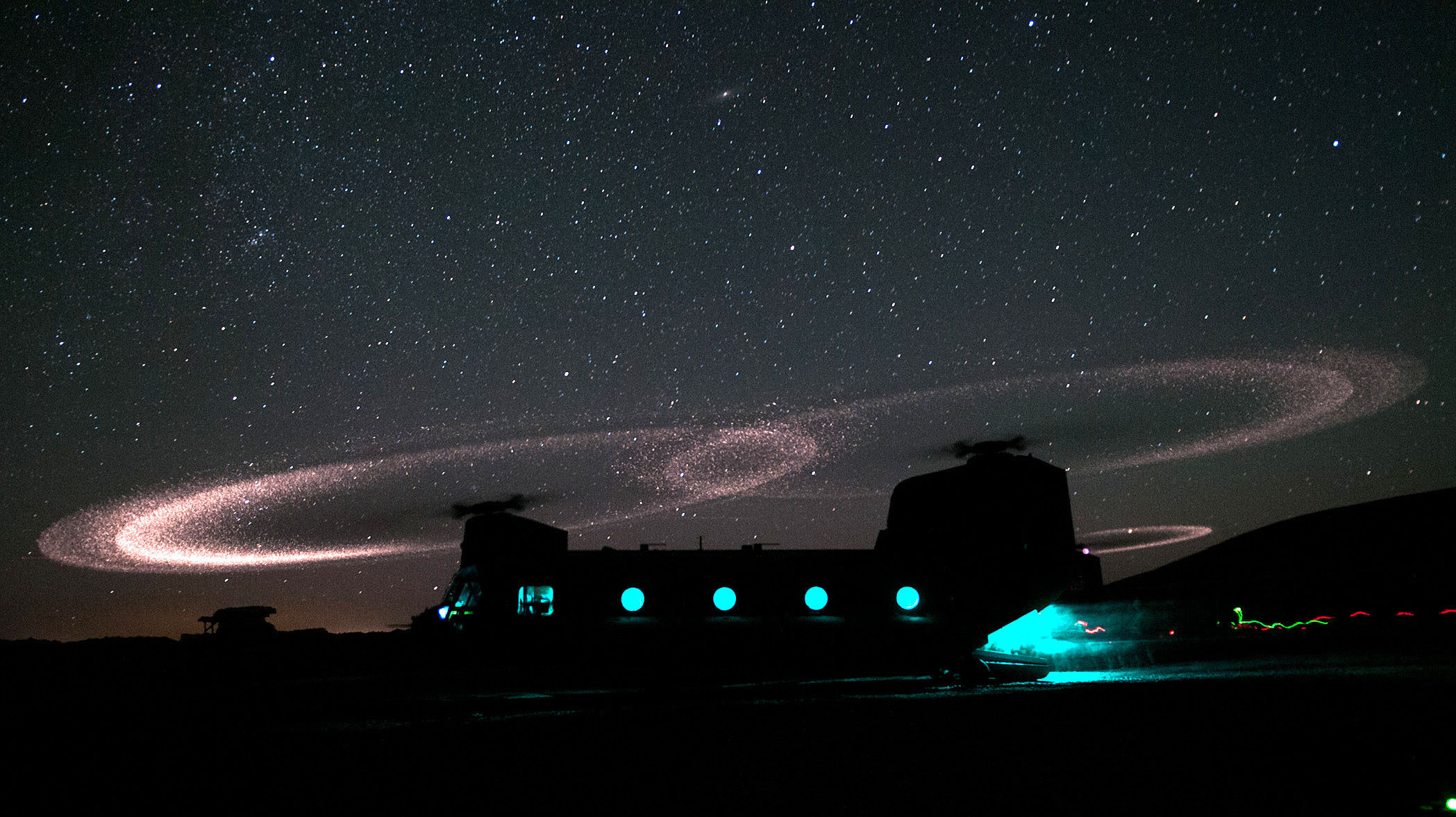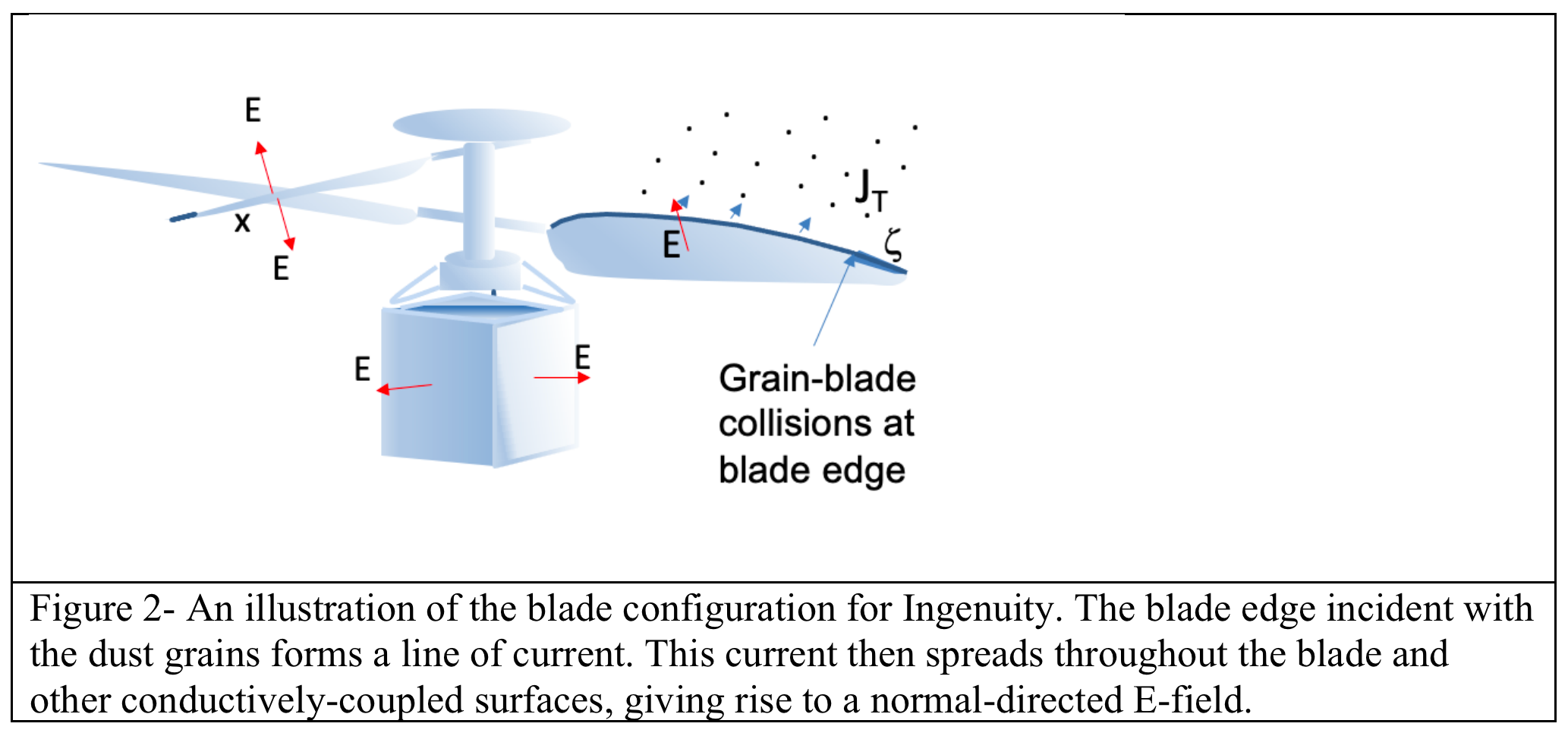NASA's Ingenuity Drone Could Unintentionally Glow During Flights On Mars
NASA successfully pulled off the first powered, controlled flight on another planet with its Ingenuity helicopter this week. The tiny rotorcraft managed to take off for a few seconds and land without any major incident. We also learned that the Martian atmosphere could potentially create enough static to make the copter glow.
The Martian atmosphere is so dusty the spinning blades of a rotor aircraft like the Ingenuity copter could potentially create enough energy to visibly glow, according to a new research paper titled, "Will the Mars Helicopter Induce Local Martian Atmospheric Breakdown?" I learned about it from a video uploaded this week to the science news YouTube channel run by Anton Petrov:
This glowing phenomenon is also known to us on Earth, and it's called the Kopp–Etchells effect. It most often occurs on our planet with rotorcraft in sandy environments, like military aircraft operating in the desert. You can see the spark-like glow in the image below (taken on Earth):

This effect is more likely to occur with aircraft on the Martian surface, according to a new research paper based on projected data for the Ingenuity flight published in the Planetary Science Journal. Considering the dry state of the Martian surface there's a lot more dust in the air at ground level.
The energy that causes the glowing effect is generated from the relationship between the rapidly spinning blades either impacting the energy fields of the dust and sand particles in the atmosphere, and/or from the energy of the blades impacting the particles directly. In a dusty-enough environment at the right time of day and apparently this could produce a "corona-like glow," the paper proposes.
Here the authors explain the methodology for calculating the energy phenomenon on Mars:
Considering Mars atmosphere, besides being low pressure and thus susceptible to breakdown, the atmosphere also has an ambient dust load observed in non-dust storm season. Smith and Lemmon (2001) report an optical depth of ~0.5 for sunlight propagating through the atmosphere. For their assumed 13 km path length, this opacity corresponds to about 0.5 grains per cubic centimeter for 5-micron sized grains or 12 grains per cubic centimeter for 1-micron sized grains.
We thus might anticipate that Ingenuity blades could also develop electrostatic charge by interacting with suspended particulates in the Martian atmosphere. Given the fast rotating blades in this particulate-rich atmosphere, we would thus anticipate locations along the blades outer edge to develop local triboelectric charge due to the blade-grain interactions similar to that described by Grosshans et al. (2018) for terrestrial rotorcraft. Also, the rotating blade itself may intensify the local dust load around Ingenuity at take-off and landing which would further increase the charging effect, similar to the terrestrial rotorcraft case in sandy terrain described by Pechacek et al. (1985).
The paper obviously goes into much more detail which you can access via PDF here. Though it doesn't sound too great to have a bunch of current charging and discharging during the flight of your aircraft. One key goal of the research was to determine whether or not these energy effects generated during takeoff and landing — when atmospheric particle volumes are most likely to peak from the blades kicking up ground dust into the air around itself — could potentially damage the craft or impact operation.

In nominal atmospheric conditions, the craft should be perfectly capable of handling these discharging phenomena during operations within the calculated parameters with no issue:
We make a special note that the triboelectric current levels being described herein will not damage Ingenuity itself. However, Ingenuity provides a unique opportunity to be used as a scientific experiment unto itself to examine the conditions for Mars atmospheric breakdown. At no other time in history have we ever had such a highly-active human system stirring and mixing the dusty, low pressure Martian atmosphere.
So what do the paper's authors want NASA to do with this information? Well, they want to fly the craft at sunset so they can see if it glows:
In summary, our laboratory breakdown studies of a Mars-like low pressure CO2 gas (Figure 1) are applied to the case of charging of the Ingenuity rotorcraft while operating on Mars. We find that breakdown is possible especially during take-off and landing when the dust load in the atmosphere about Ingenuity could be higher than normal. We suggest that operations occur once at twilight so that any corona-like glow be observed by Perseverance in the low light environment. Perseverance's imaging systems should be monitoring Ingenuity especially at takeoff and landing to search for a possible corona induced on the blades in the low-pressure Martian atmosphere that might confirm the atmospheric electricity laboratory experiments like that in Figure 1.
I'm guessing they wouldn't suggest taking it up in a Martian sand storm, though, unless you really wanted a cool light show. Here's the latest, high-quality footage of the first flight released by NASA (sadly with no glow, yet):
